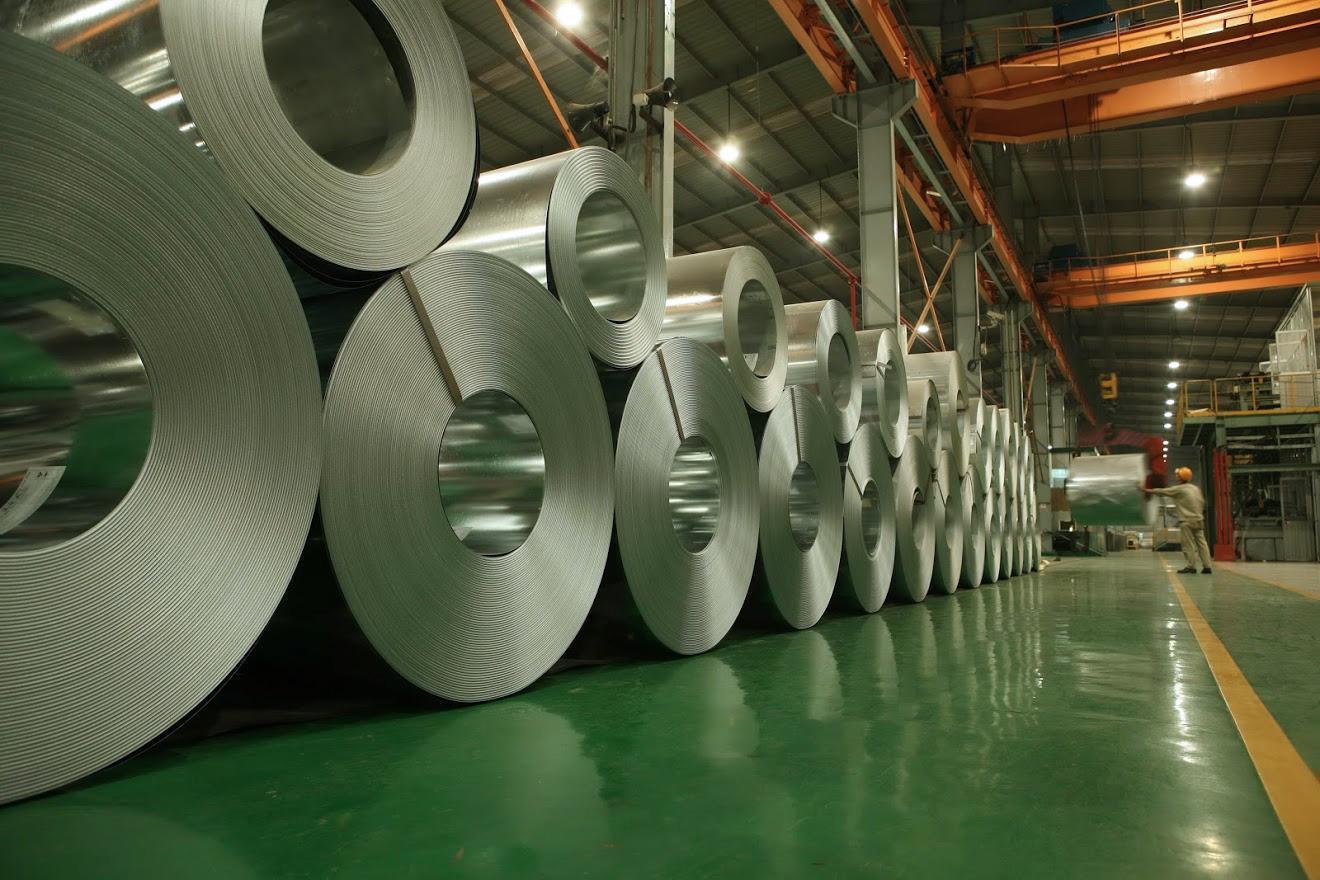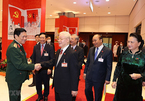
Vietnam export of industrial goods in recent years has increased rapidly, but the more the exports increase, the more Vietnam depends on imported intermediate products, especially from China and South Korea. Photo: Le Anh Dung
Structural transformation
In the book "Vietnam today and tomorrow", Prof. Tran Van Tho said that there are two important aspects that need to be transformed to promote economic development: labor and corporate structure.
In terms of labor structure, the surplus labor in agriculture is very large right now. About 35% of the labor force works is in the agricultural, forestry and fishery sector, which has very low productivity. Meanwhile, industrialization is at a low level. The industrial structure is very thin with assembly being the mainstay, a weak supporting industry, and Vietnam’s poor position in the global value chain.
Vietnam export of industrial goods in recent years has increased rapidly, but the more the exports increase, the more Vietnam depends on imported intermediate products, especially from China and South Korea.
Therefore, in the coming time, it is necessary to promote production of products to replace imported intermediate goods. Along with this in-depth effort, industrialization should also be promoted on a large scale by creating an open environment for domestic and foreign enterprises to invest in new industries. As a result, surplus labor in the countryside and in the agricultural sector will rapidly shift to the industrial sector, raising the productivity of the whole society.
Regarding the corporate structure, the informal sector, mainly the individual economy, accounts for up to 30% of GDP. This is a sector with very low productivity. On the other hand, private enterprises (accounting for 10% of GDP) are mainly small and medium firms, who are always in a disadvantageous position in the market for factors of production such as capital and land.
The informal sector or the individual economy and private enterprises are the main parts of the non-state economy, yet most of them are small in size and low in productivity because of the inability to innovate technology, thus failing to connect to the global value chains of multinational companies.
Most Vietnamese enterprises are very small and micro-sized because of the difficult business environment (high administrative costs) and the difficulty in accessing capital and land.
Prof. Tran Van Tho said that administrative reform was needed to reduce the ask-give mechanism and inspection and to perfect the capital and land market. The agencies in charge of small and medium-sized enterprises at the central and local levels should promote the function of supporting and guiding small, medium and micro enterprises in obtaining loans, and finding partners, methods of approaching the market, and access to technology.
Growth engine stalls

Vietnam needs to be selective about investment projects, giving priority to modern industrial projects. Photo: Le Anh Dung
The Covid-19 pandemic continues to pose many challenges for Vietnam, affecting the two economic growth engines - exports and domestic spending. In the medium and long term, this is the “middle income” trap that holds many developing countries back.
Economist Tran Quoc Hung commented in the book "Vietnam today and tomorrow" that the "FDI + assembly for export" model will not be enough to ensure rapid growth as before. Vietnam needs to rely more on internal resources, particularly increased labor productivity and localization rate in industrial production.
The localization rate in many assembled and exported products of Vietnam is still very low. For example, in the automobile industry, the localization rate of personal vehicles under 9 seats is only 7%-10% and about 20% for trucks under 7 tons, which is very low compared to the average of 65%-70% in the region.
Vietnam's foreign trade relations are also unbalanced. Vietnam's annual trade surplus with the US and the European Union (EU) is over $30 billion, but its annual trade deficit with China and South Korea is also over $30 billion. This reflects the situation that Vietnam mainly imports raw materials and intermediate components from China and South Korea, and then assembles and exports them to the US and the EU.
In this situation, the trend of diversification and regionalization has created good opportunities for Vietnam to attract foreign direct investment (FDI). In 2019, FDI reached $38 billion, up 7% year-on-year. By the end of 2019, the total registered FDI capital in Vietnam amounted to $362.6 billion, and the disbursement rate was 58.4% ($211.8 billion).
FDI into Vietnam was mainly from South Korea ($67.7 billion or 18.7%), Japan ($59.3 billion or 16.5%), Hong Kong/China, and Singapore. Asian countries account for 75% of the total FDI. Vietnam needs to take advantage of the current opportunity to expand the FDI flow from the EU (15%) and the US, which is small at present, only $10 billion or 2.8%.
Vietnam needs to select investment projects, giving priority to modern industrial projects, said Mr. Tran Quoc Hung. Vietnam does not necessarily avoid 100% foreign ownership, as long as there are clear rules. More importantly, it needs to set conditions that foreign enterprises help train skilled workers, use and help develop the ecosystem of equipment, and supply accessories to increase the localization rate.
In the next 10-30 years, Vietnam needs to exploit its relative advantage in the workforce, during the remaining time of the golden age population. It is estimated that by 2050, Vietnam will become a "very old" country with the proportion of elderly people increasing to 20.5% (compared to 18.1% in Asia).
Vietnam reached the lower middle income level in 2008, and is now on its way to the upper middle income level. In the next decade, with the strategy of structural shift and the advantage of the workforce in the golden population period, it is hoped that Vietnam's economy will develop rapidly.
Lan Anh

Agriculture Minister: smaller companies play big role in economy
Minister of Agriculture and Rural Development Le Minh Hoan believes that Vietnam needs to attract both "eagles", or big investors, and "sparrows", or small investors, because both are important to the country’s development.

Turning point for development of the digital economy
In the past few years, Vietnam has achieved important milestones in the process of promoting the digital economy.

'Safety belt' for the epidemic era
Digital technology is an invisible wall that provides security to foster trade and tourism during the time of epidemic. This is a new trend that forces the service industry to accelerate digital transformation during a historic turning point.